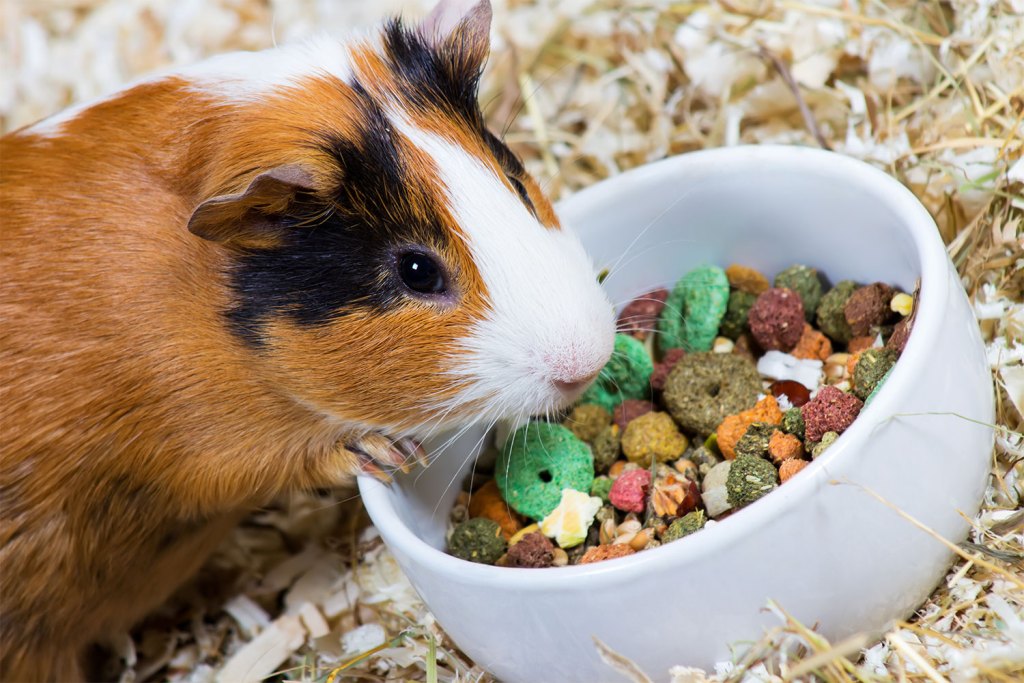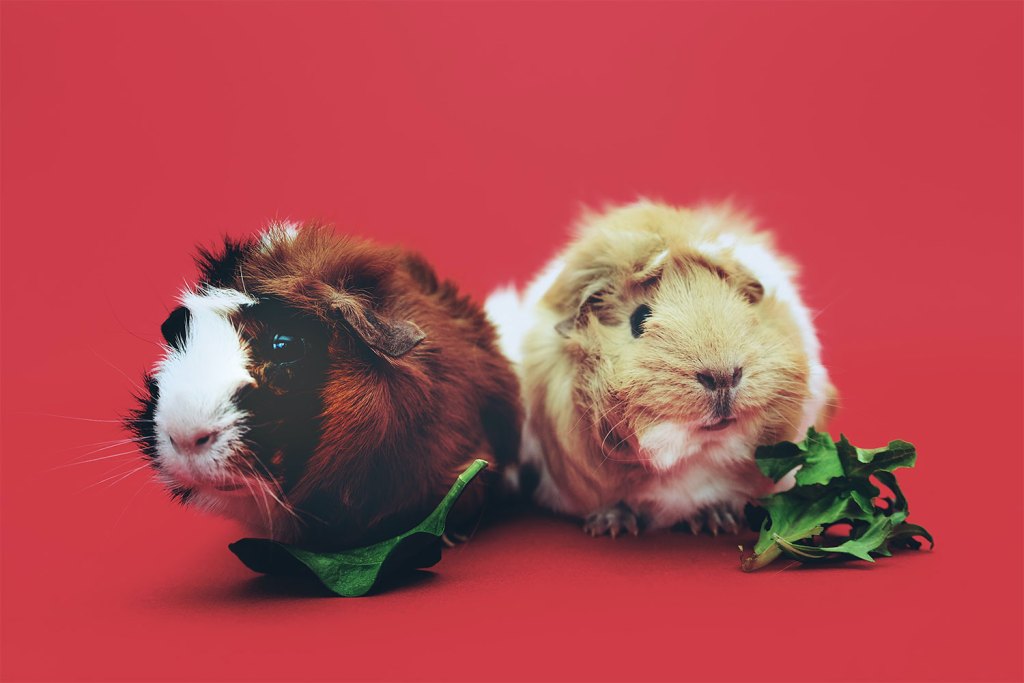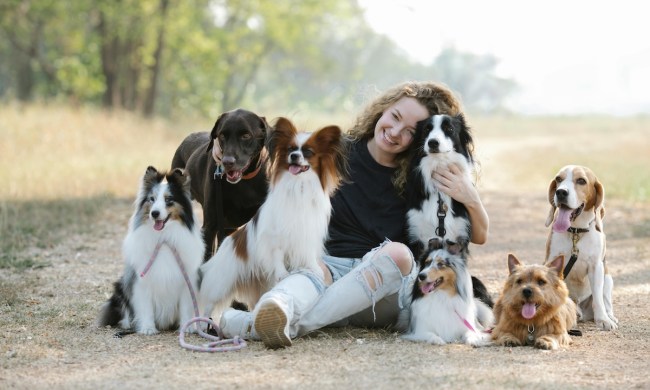Your guinea pig is a precious family member, so you want to build a foundation of health and well-being. Guinea pigs have very different diets from their dog and cat counterparts, so it’s essential to tailor your guinea pig’s diet accordingly.

We’ve put together a list of safe guinea pig food options that will nevertheless delight the palate while nourishing their bodies so you don’t have to worry about it. This list covers a variety of dietary requirements to support all your guinea pig’s systems and provide a little fun as well.
What diet do guinea pigs have?
Guinea pigs are herbivores, gaining nutrition from plant matter. They require a combination of hay to support proper digestion, fresh fruits and veggies for interest and vitamins, and guinea pig food pellets to round everything out.
While it may seem like fresh fruits and veggies are the healthiest part of your guinea pig food, hay should make up the bulk of what you feed every day. Otherwise, your guinea pig may experience dietary-related issues such as diarrhea, obesity, or heart disease.
The biggest part of the diet — hay
Hay may not seem appetizing to you, but it’s the biggest part of your guinea pig’s diet. Herbivores have complex digestion requirements, and hay helps keep your guinea pig’s digestion smooth and clear.
Chewing hay also helps wear down your guinea pig’s teeth, which never stop growing. Soft fruits and vegetables won’t be able to perform this action, leaving your guinea pig in serious danger of overgrowth.
Look for fresh, sweet-smelling hay that’s free of mold. Meadow hay is typically a guinea pig’s favorite, but orchard or timothy grass hay is also acceptable. Try to find something “farm to cage,” to avoid pesticides and look for pliable green stalks.
Vital for a rounded diet — pellet food
Pellets are another big part of your guinea pig’s diet. They provide the proper concentration of vitamins and minerals to ensure your guinea pig gets all the building blocks for health. Choose a variety that has been veterinarian developed or tested and ensure you follow the instructions carefully.
Pellets are not a substitute for fresh quality hay. Pellets help catch any nutrient deficiencies your guinea pig has and offer further support, but you must source quality hay first.

Treats and taste interest — fruits and veggies
Guinea pigs can typically have up to a cup of fresh fruit and veggies per day altogether, but most of that should be veggies instead of fruit. The fruit is a nice sweet treat, but it contains too much sugar to be more than a small accent.
Green veggies are typically a guinea pig favorite, and they also offer vitamins and minerals to support your guinea pig’s health. Guinea pigs cannot synthesize vitamin C, so dark leafy green veggies can provide this missing nutrient.
Broccoli, cabbage, spinach, and romaine lettuce are great options to fill this void. They’re safe for your guinea pig’s digestion, but remember to remove any uneaten fresh foods after 24 hours so that you don’t encourage mold.
Things to avoid
Guinea pigs do not need any meat, dairy, or insects, so these foods are off the menu forever. Avoid potatoes, rhubarb, and tomato leaves, as well. Cereals, grains, and beans are also unnecessary.
Stick to the concept of only plant matter and no unnecessary protein such as that found in beans, nuts, and legumes. Guinea pigs must also stay away from human foods like candy and sweets, breads, pickled or fermented foods, and the like.
Do your research for the list of foods that guinea pigs should not have, but here are a few things:
- chocolate or caffeine products
- onions
- avocados
- corn kernels
- peanut butter
- mushrooms
- garlic
- iceberg lettuce
- houseplants
- grasses from your yard
- other potential pesticide-covered plant matter
This is by far not an exhaustive list. Talk to your veterinarian (yes, even guinea pigs need vet visits) to find out what is and is not OK.
Introducing new foods
When you introduce new foods to your guinea pig, keep in mind that slow is better. Introduce fresh foods one at a time and never force your guinea pig to eat a large amount of something new.
The best thing is to give your guinea pig a small amount and wait a few days. Check for any signs of digestive distress. If your guinea pig is fine, you can introduce another new food after a few days.
Ensure that you always clean the food bowl before refilling it with anything new or familiar, and always have a fresh water supply within reach. Never limit your guinea pig’s water or their hay intake. Everything else, remove after a set amount of time to prevent mold or mildew.
Keeping your guinea pig safe and happy
Fresh fruits and veggies, plentiful and sweet hay, and food pellets are a well-rounded diet for your guinea pig. This combination will provide your guinea pig with the nutrition needed to have a foundation of health and well-being.
Supplementing with fresh foods and guinea pig treats here and there helps keep your guinea pig interested, and with clean water, some exercise, and the right hay, your guinea pig can have a great life as your beloved pet.


